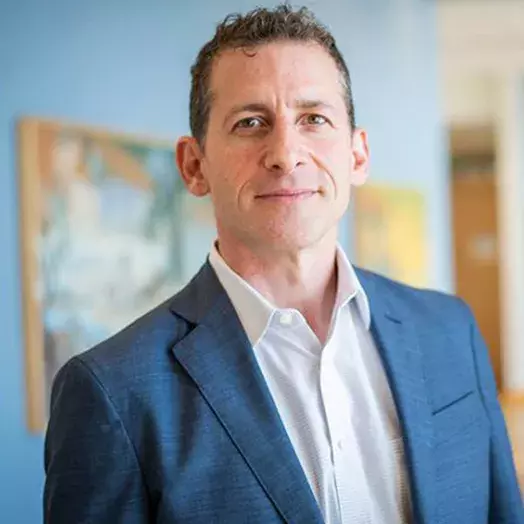The ruling by the U.S. Supreme Court in West Virginia v. EPA could slow the Biden Administration’s goal of cutting greenhouse gas emissions in half by the end of the decade.

Carey professor says companies left with state-led patchwork of regulations
Johns Hopkins University Professor Paul Ferraro says uncertainty within the business community will be the lingering effects after the Supreme Court’s historic ruling against the EPA this summer.
The ruling in late June limited the EPA’s authority, under a provision to the Clean Air Act, to regulate gas emissions from the power sector. That means the EPA must now receive clear congressional authorization to phase out coal-fired power generation.
The state of West Virginia brought the challenge to the EPA’s power. According to the U.S. Energy Information Administration, the heavy coal-producing state received 88 percent of its electricity from coal. Renewables like hydropower and wind accounted for just 6 percent. In 2015, the state repealed a law that required a certain amount of power to come from renewable sources.
Although some environmentalists say the ruling is a major blow to the planet, there are still recourses to protecting the Earth’s health.
The Supreme Court’s decision left other powers under the Clean Air Act intact. The EPA could still adopt a national science-based cap on climate pollution. It could require states to come up with plans to meet that cap. For example, the ruling only addressed plant emissions. The EPA can still impose steep reductions on climate emissions from cars and trucks, as well as airplanes, ships, and trains.
Johns Hopkins Carey Business School Professor Paul Ferraro, who holds a joint faculty appointment with the Department of Environmental Health and Engineering, shared the impact this decision could have on businesses.
Some companies may choose to relocate in states for reasons related to public image and social corporate responsibility goals, but those kinds of investments don’t help us get closer to our carbon neutrality goals. We need to increase the size of the pie, not just reallocate the slices.”
Paul J. Ferraro, PhD, Bloomberg Distinguished Professor
Q: How could this decision cause other countries to pull out of business deals with the U.S.? What does this mean for states with aggressive emissions reduction targets and incentives to attract clean energy and climate technology companies?
Ferraro: Businesses often dislike regulations, but they dislike uncertainty about regulations and patchworks of regulations even more. The SCOTUS decision injects regulatory uncertainty in the U.S. market – “What other regulations may be struck down?” – and, given Congress’ inability to act, the SCOTUS decision ensures that the U.S. will have a state-led patchwork of regulations. For businesses, regulatory uncertainty and patchworks raise costs now and make planning for the future more challenging. In markets where there is regulatory uncertainty and a patchwork of regulation, you see less investment in economically productive activities. So, yes, I expect that the decision will reduce the attractiveness of the U.S. market for foreign investors in many sectors, not just those with direct connections to clean energy. With this SCOTUS decision, no state wins – states with aggressive emissions reductions targets and incentives are, on their own, unlikely to attract clean energy and climate technology companies simply because of their targets. Some companies may choose to relocate in states for reasons related to public image and social corporate responsibility goals, but those kinds of investments don’t help us get closer to our carbon neutrality goals. We need to increase the size of the pie, not just reallocate the slices.
Q: How big of a blow will the decision have on the EPA’s power to push carbon neutrality?
Ferraro: The EPA still has options, but I am concerned that their remaining options are costly, which will reinforce the public’s mistaken impression that mitigating climate change has to be costly. With no leadership on climate change coming from Congress, the EPA was always going to be limited in how much, and how efficiently, they could move the U.S. towards carbon neutrality. The most straightforward and economically efficient approach would be to put a price on greenhouse gas emissions, whether it be through a carbon fee or a cap-and-trade carbon permit system. In the absence of that simple approach, the EPA has to rely on their existing authority and executive orders. The SCOTUS decision reduces the number of options that the EPA has as its disposal because SCOTUS declared that the EPA cannot mandate a shift to renewables. That reduction in options means the EPA will find it more challenging to achieve a carbon neutrality goal. The EPA still has options through setting pollution standards, but I fear those options may be much more expensive than they would have been in the absence of the SCOTUS decision.
Q: How will less demand for clean energy solutions in large swaths of the U.S. impact business? How will business leaders deal with the “uncertainty” of the ruling?
Ferraro: Demand drives supply. Demand also drives innovation, which lowers costs and further increases supply. Without clear market signals that demand for clean energy and for reduced greenhouse gas emissions will be steadily growing over time, businesses will invest less in those activities, and thus we’ll see less innovation and higher costs in those activities than we’d otherwise see. The importance of clear market signals from government regulators is well understood by the Federal Reserve. Congress, unfortunately, has not yet learned this lesson. Businesses leaders will react to the “uncertainty” of the ruling by delaying actions and investments. Delayed actions and investments mean higher costs for all of us collectively on the planet because the longer we wait to reduce greenhouse gas emissions, the worse the damages will be in the future.
Q: How could the ruling affect decisions regarding where and how companies and potential investors allocate their funds?
Ferraro: For shorter-term investments, we’re likely to see investments shifting from renewable energy sources and other clean energy generation sources toward technologies and products that are likely to benefit from the EPA using its SCOTUS-depleted, regulatory toolbox. An example would be technologies and products that will help businesses meet specific technology-based standards that affect emissions. Businesses who have been investing based on where they believe we’ll be in 2050 will likely continue to invest in the same areas in which they are currently investing. They will do so because the direction in which energy generation and use must go has not changed. These companies just won’t be investing as much as they might have been doing with the implementation of the Biden plan.


